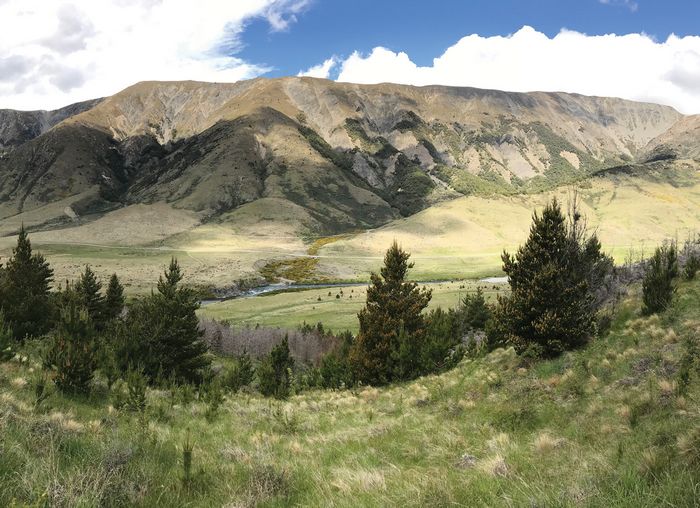Three Scion projects receive $33.7 million of Endeavour Fund investment
Three Scion research projects will receive investment totalling $33.7 million over five years through the Ministry of Business, Innovation and Employment 2021 Endeavour Fund.
The successful science projects were announced on 7 September 2021 by Research, Science and Innovation Minister Hon Dr Megan Woods.
The projects funded are Seeing the forest for the trees: Transforming tree phenotyping for future forests, ($9.63 million), Extreme wildfire: Our new reality – are we ready? ($11.25 million), and Vive la résistance – achieving long-term success in managing wilding conifer invasions ($12.85 million).
Dr Woods announced the recipients will help to tackle the big issues that New Zealanders care about, like boosting economic performance and climate change.
Seeing the forest for the trees: Transforming tree phenotyping for future forests
Forest-scale phenotyping (i.e. characterisation or measuring) of millions of trees will enable forest growers to optimally match different tree genotypes to site conditions under current and future climates, increasing indigenous and exotic plantation productivity, and forest health and resilience.
New planted forests are an essential component of New Zealand’s transition to a carbon-neutral bioeconomy. However, our ability to grow the right tree in the right place is at risk due to uncertainty around a quickly changing climate.
New ways of collecting and analysing phenotypic data will allow tree species and genotypes of interest to be identified quickly. High-throughput tree phenotyping using remotely sensed data will inform Scion on structural plant traits and biochemical processes reflecting plant health, nutrition and drought tolerance, and will also characterise trees in three dimensions. Combined with genomic data, Scion will be able to select and breed trees with desirable traits such as high carbon storage and resistance to disease and drought.
The project will explore how Māori select and value trees for cultural purposes (e.g. whakairo, rongoā, fragrance, food flavouring, and gifting). Co-developing a hapū-level framework for culturally phenotyping tōtara and kauri cultural traits will incorporate what Māori value in taonga species into future forestry research. The team will leverage the methods developed for radiata pine and will develop specialised remote sensing indicators for this purpose.
This multidisciplinary project brings together collaborators from New Zealand and overseas, including the University of Melbourne, University of Trier (Germany), University of Sydney and PlantTech Research Institute.
For more information, contact

Extreme wildfire: Our new reality – are we ready?
Extreme wildfire events are increasing at a faster than predicted rate, with research and operations worldwide struggling to keep ahead of the fire front.
Scion will challenge existing understanding of the transitions between linear (predictable) and extreme (unpredictable) fire, especially in relation to fuels. Predicting the physical processes driving fire-spread is central to all fire readiness as it allows effective tools and strategies to be developed to keep firefighters and communities safe.
A changing climate is increasing the frequency and severity of wildfires and our indigenous forests, once considered safe from fire, are under threat. The risks are escalating too – especially for those living within the rural-urban interface. For example, the 2020 Lake Ōhau wildfire is the country’s most damaging wildfire in living memory. It destroyed most of the houses in the Mackenzie Basin’s Lake Ōhau Alpine Village, burning through more than 5000 hectares. The costs were huge too – fighting the fire from the air cost $1.2 million, while insurance losses were around $35 million.
The predicted future annual direct impact of rural fire on New Zealand’s economy is around $140 million, with indirect costs estimated to be at least two to three times the direct cost, plus indirect impacts as much as 30-60 times direct costs. The direct costs alone are predicted to rise to around $550 million per year by 2050, under a likely climate change scenario.
A world-class international team will work on the programme, including Scion, US Forest Service Missoula Fire Sciences Laboratory, San Jose State University, US Forest Service Pacific Northwest Laboratory, US Forest Service Rocky Mountain Research Station, Karlsruhe Institute of Technology (Germany), RMIT University (Australia), Canterbury University and Lincoln University.
For more information, contact

Vive la résistance – achieving long-term success in managing wilding conifer invasions
Wilding conifers are an economic and environmental disaster that already affect 1.5 million hectares of New Zealand.
A further 7.5 million hectares of productive or iconic conservation land are threatened by invasion in the next 30 years. In response, the government has established a National Wilding Conifer Control Programme to deal with the problem.
The science team will develop effective strategies to create long-term resistance to conifer re-invasion on treated land. The Scion programme will transform current conifer wilding management practices by breaking an otherwise inevitable cycle of treatment, re-invasion and re-treatment. Scion will also work with Māori around management of wilding conifer re-invasions, to help restore Māoritanga to affected land.
Existing wilding conifer populations are currently being treated, but control efforts do not consider that cleared land is more likely to be re-invaded due to incomplete initial control, soil legacy effects, seed banks and other causes. Re-invasion processes are significantly different from those of initial invasion and there is a critical international knowledge gap on how various factors interact to drive this.
Addressing this knowledge gap will have significant benefits for New Zealand with a projected $6.3 billion of benefits by 2050 from the current $100 million investment in wilding control. Scion estimates there will be substantial benefits of around $750 million (benefit-to-cost ratio is around 54:1) by reducing wilding conifer treatment costs and avoiding multiple re-treatments by preventing or reducing re-invasion cycles.
This highly collaborative research project is underway and researchers from Scion, Lincoln University, University of Canterbury, Manaaki Whenua, Australian National University and the National Centre for Atmospheric Research (USA) will work together to support the National Wilding Conifer Control Programme.
